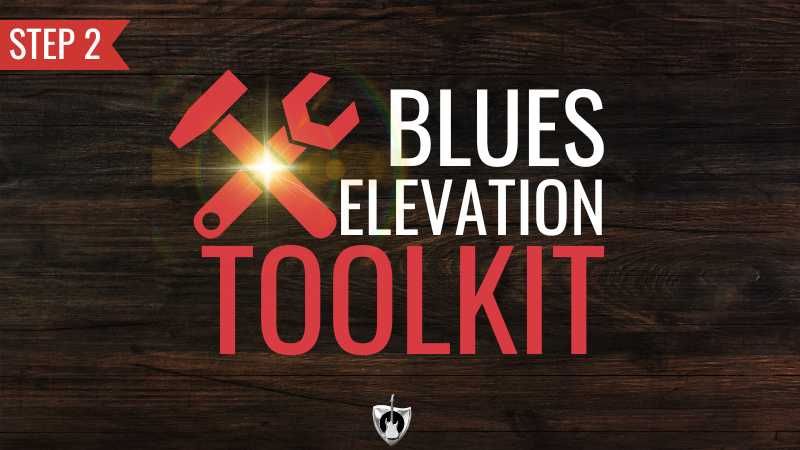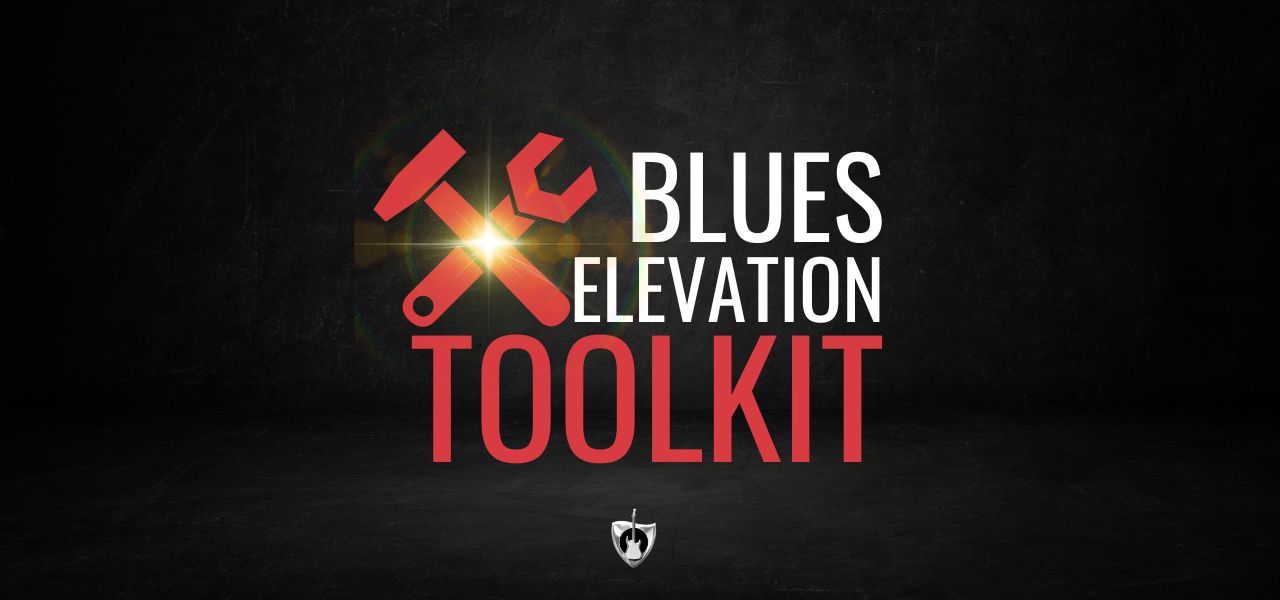Different Guitar Tones for Different Styles of Music - 042

Today it’s all about finding different guitar tones for different styles of music. I’m tackling two different styles Blues and Rock with two different rigs.
How do you find tones for different styles of music?
It’s a tough one. I remember when I first started playing I had my amp and my guitar. I thought that would be all I would need.
I know what you are thinking…. “That didn’t last long, did it”
As I got more proficient on the guitar and as I got better at listening for the guitar in songs that I liked, I started to notice something. I wasn’t sounding like these songs.
I didn’t understand a lot of the finer points of guitar tone…
…and there’s a lot to know.
The problem is, even though I could hear that there was a difference, I couldn’t put into words what that difference was, and how to get those tones for myself.
The biggest resource that I had was other guitar players that were in the same boat. We would research constantly to find out what these players were using and why the gear they had sounded the way it did.
But, in this age of sharing information, a lot of this has been rectified. And it is easy to look back, see and hear what players were using at that time and also how their gear changed over the years.
So what is the answer?
How do we know what to use… Well the answer is easy..
…Use your ears.
Listen and experiment with different gear. There are no rules. We just have the tones of our favorite songs to guide us.
The big problem is that guitar gear is expensive. It’s not easy to just buy all of the different brands of amplifiers and make a decision based on experience.
Also, you may not have this gear available to you, so you research and sometimes make a decision on what the marketing of the product says. Then when it finally arrives, you may or may not enjoy the tones that you are getting from your gear.
Going the research route becomes much more attractive after spending a bunch of money, believing the advertisements and being less than satisfied.
Research
Spending the time to find out the gear of your favorite players or the greats of a certain style is worth your time.
This is easier to do than ever before. Just type in “Joe Bonamassa gear” and see the wealth of information appear at your fingertips.
So, knowing what gear to get is doable. And spending the money on that gear may or may not be something you can do.
But, there is another problem. You are not that player. I can’t tell you how many times I’ve bought a pedal that a famous player used, only to return it because I couldn’t get the same results. Why didn’t it sound great for me? What was I doing wrong?
It could be that it wasn’t set up correctly, or used with other gear that worked well with it. Or, it could be that it just wasn’t the right guitar, amp, pedal, pickups, etc… for you. It just didn’t jive with you. And you are now stuck with something that is not working.
How can we get more experience with these things? How can we find the right gear, that makes us sound right for the style of music we want to play and makes us happy?
We need some experience. Time in the trenches. Now that we don’t have access to all of this gear, we are back where I started a long time ago: counting on other guitarists for help. And that is where I’m talking about today.
Tone episodes.
I’m super excited to add this segment to what I’ve already been doing this year and I’m ready to go. So lets start finding tones for our first style of music… Blues.
Basic Blues tones.
Way back on episode 22, I went in depth on blues gear. The different guitars, amps, and pedals that were common to blues guitarists.
There was a lot of information in that one and if you are able to have access to all of that gear, you are super lucky.
Sadly for the rest of us that is not an option. We are going to have to do some generalizing.
If you boil that whole episode down, you come up with some conclusions.
Fender amps, in all of their different stages and combinations are a staple in blues music. And, while there are big differences between the different fender amps, they all have the “Fender” clean sound at their core. That’s the key. So today I’m going to put that into practice. Using a fender amp in different ways to get some good blues tones.
The Strat, Tele, Les Paul, and 335 are very common to blues music. Today, I’ll take a single coil strat and a humbucker equipped Les Paul, and use them to fill out our sounds in different ways. I will also use several pedals to get different sounds out of that fender amp today as well.
So lets talk about the gear.
The amp is a home made Vibrolux. It uses two 10 inch speakers and is based on the Fender Blackface Vibrolux circuit. It has a sparkling clean sound at low volumes and start to have that classic blackface breakup around 4. It’s a great amp to play live. It’s not too heavy and is more than loud enough to keep up with a heavy handed drummer.
I have my 2001 Fender American Double Fat Strat That has been converted to single coil with Fralin pickups. Vintage hot in neck and middle and a sp43 in the bridge (which is a hotter ceramic strat pickup that comes very close to p90 territory. .
I’m also using a Gibson Les Paul special HB. It’s a “not so expensive” Gibson that is a terrific guitar. Being a “Special”, it doesn’t have the carved maple top. That makes the guitar lighter and a bit darker, which is something that I like a lot. The pickups are Dimarzio 36th anniversary humbuckers that have a very nice P.A.F. type sound.
I will also be using these pedals:
- Xotic EP Booster to boost the signal,
- Ibanez Ts9 for a classic blues lead tone, the
- BB preamp and the
- Maxon SD9 for a different type of overdrive. I also use a
- Boss DD-3 delay and
- Digitech RV7 reverb sparingly to fill out the sound.
I’ve recorded just four tracks.
Please remember that that none of this is really mixed. This is just some rough mixes to demonstrate some classic gear in some different styles. Ive not added any reverb, EQ or compression in my DAW. This is just raw. I made all of this up pretty much on the spot and I’m putting the playing up, warts and all. The point of this isn’t perfection. The point is so you can hear the tones I get for these two styles of music.
1 The first is the Strat rhythm with the amp cranked and with no pedals. To do this, I’m going to use my Axetrak speaker box. It is basically a small speaker with a microphone in a closed cabinet. It will help keep the neighbors happy .
2 Next is the Strat rhythm using pedals into a clean amp miced with at Shure SM57
Video clip 2 coming
Can you tell the difference between the amp drive and the pedal drive?
3 Next is Lead using the Strat bridge pickup with a TS9 for a boost into the BB Preamp, (which has a light overdrive here) plus DD3 delay and Digitech reverb.
Video clip 3 coming
4 Last is a guitar solo using the Les Paul bridge humbucker with the BB Preamp (with a bit more gain and delay and reverb).
Video clip 4 coming.
So there it is. a blues track with 4 different blues tones. They all have different gear but give the sounds that we need to go along with the style.
Ok, lets move on to our next style.
Basic Rock tone
Going for a basic rock tone has a lot of variables as well. But you can be sure that there will be a good bit of overdrive or distortion there. That over drive, aggressive guitar sound is such a staple of rock music.
You can’t get away from it. And there are so many different tones that are used in rock. From subtle alt and folk rock el84 grind, all the way to punishing metal tones… and all things in between. You can spend all of your time just trying to go through all of the different sounds. But, today I’m just going for a good solid rock sound.
The Marshall amp has been the staple rock amp for most of rock guitar’s history. From Hendrix to the Allman brothers and on all of the way Zakk Wylde, Joe Satriani and a million others, you can’t go wrong with some sort of Marshall to get all of the wonderful British gain you need to fit the bill.
There are many other amps with different takes on the high gain sound, and they are all great in their own right. But, for this example we will explore the Marshall rock sound. It’s a great place to start!
The guitars I will use today are the same as the opes in the blues clips. A Strat and a Les Paul.
Tele’s, super Strat guitars, and flying V’s are all great for rock. But today, I’m sticking with these classic instruments.
For pedals I’m going to use the
Maxon SD9 for one of the rhythm sounds, and A Boss DS1 for the lead. The SD9 is a take on the tube-screamer without so much mids, and the boss DS1 has been the pedal of choice for Steve Vai and Joe Satriani for many many years.
Let’s get started.
1 left pure amp distortion
Video clip 5 coming soon
2 right Maxon SD9 distortion
Video clip 6 coming
3 Strat lead with DS1 and a TC electronic Flashback delay pedal
Video clip 7 coming
Conclusion
Today, I took what I think are the staples of blues and rock guitar, and showed you how to use them in the context of these sample clips.
I really enjoyed this and would love for you to give something like this a try. I used real amps and pedals, but you don’t have to. The same ideas used here completely apply to modeling software. You can replicate exactly what I have done here virtually and get awesome results.
GET FREE WEEKLY GUITAR LESSONS, PODCASTS, AND MOTIVATION DELIVERED TO YOUR INBOX.
Your information is kept safe. It's never shared with third parties.




